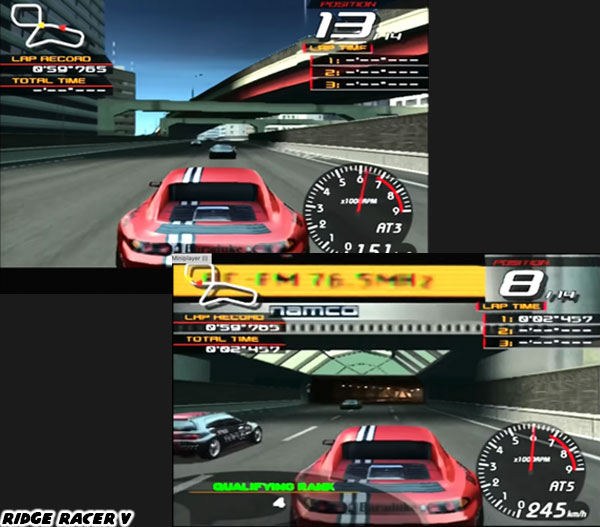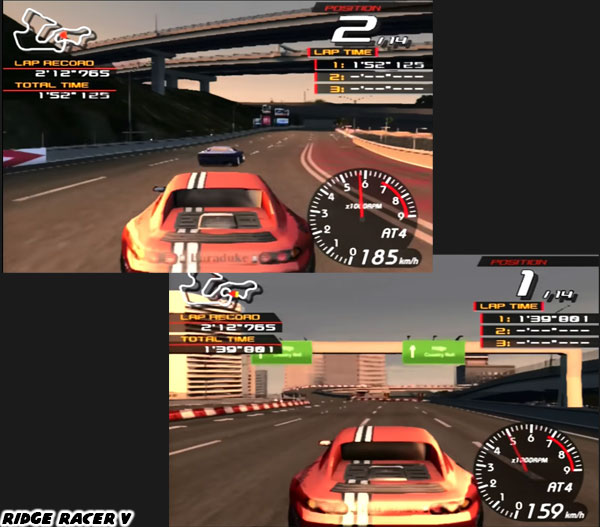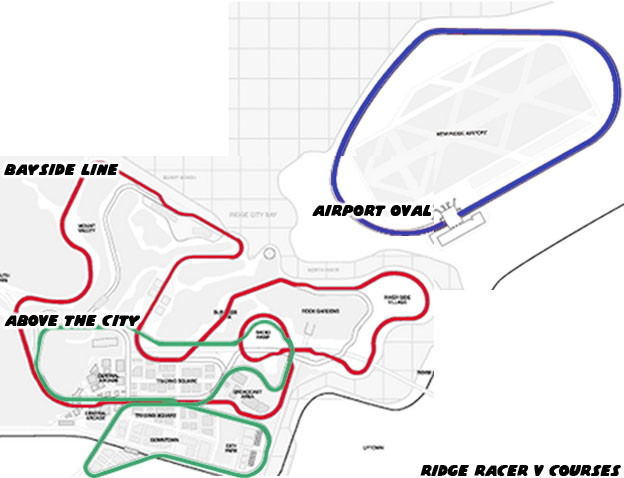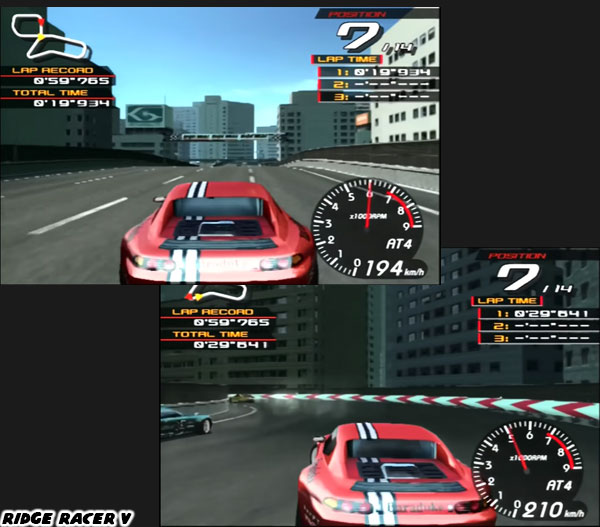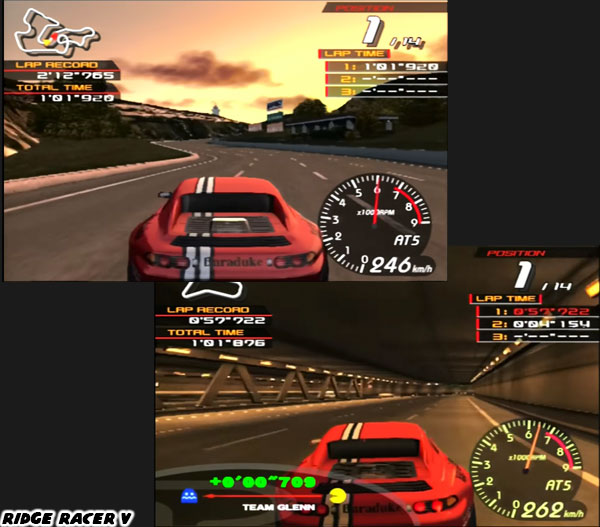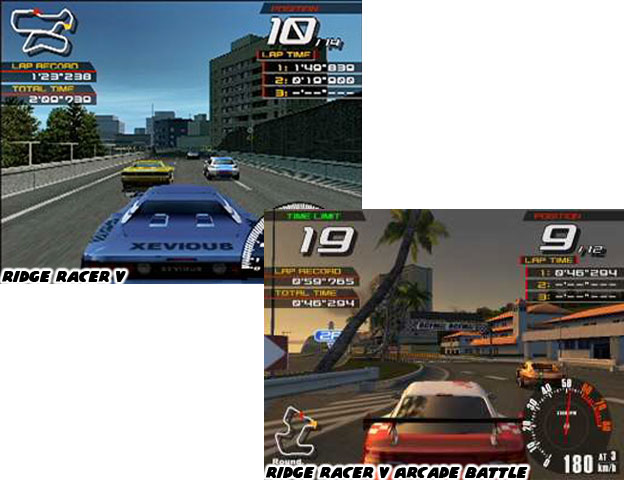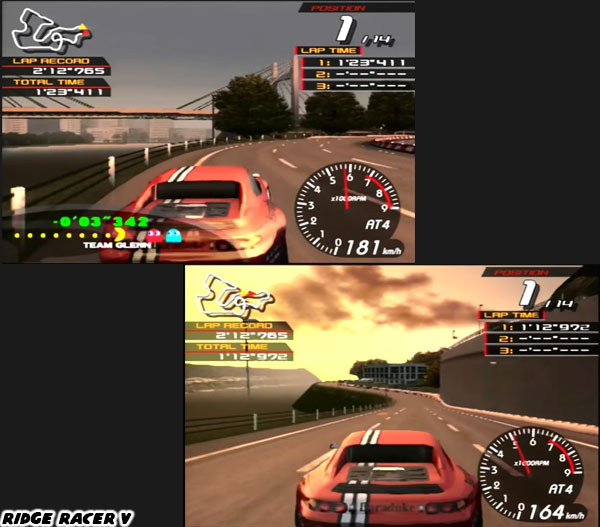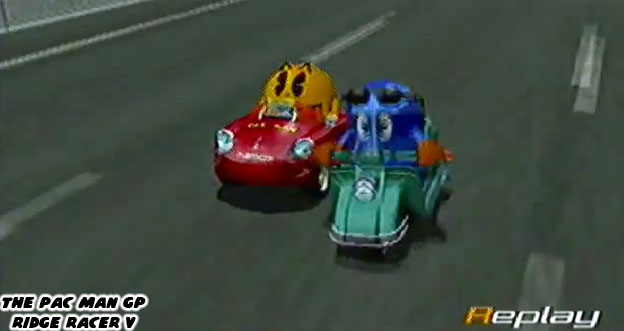The world of Namco was ripe with conflict. Many players overlooked it but the Ridge Racer cars were actually covered in stickers of opposing factions. There were many purposes for the logos. Primarily they made the cars look like actual racing machines. Many actual race cars had memorable colors and patterns as the team livery, yet the most famous also prominently featured sponsor logos on the body. Even non race fans could remember that there were cars with huge Tide, STP, Red Bull or Marlboro logos placed in plain view. The sponsor logos signified the games that the Ridge Racer Project members had worked on as well as the legacy of Namco.
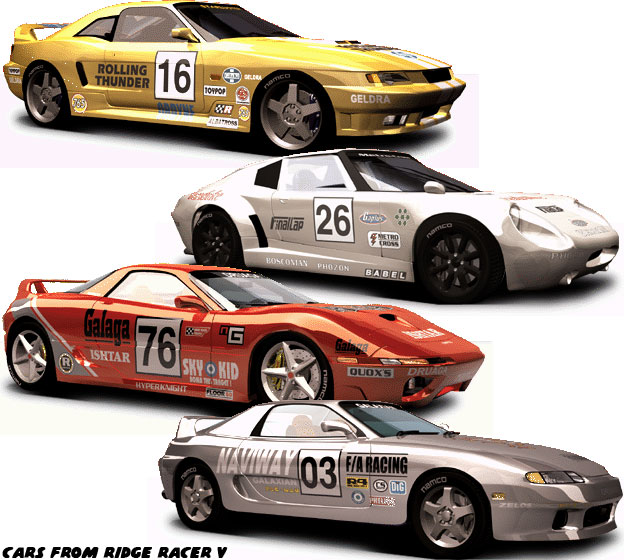
The stickers also served as a reminder of the wars waged away from the race tracks. Conflict and not peace were the driving forces behind every great game. Come to think of it, a well presented conflict was also the root to every great book and film as well. The most heated races, especially the 500 mile, 1000 mile and 24 hour endurance races could make drivers feel as if they had just survived a military battle. The Ridge Racer games were set on the days that there were no major conflicts in the Namco universe, which seemed few and far between. These races, like those from the classic Sega arcade racers, took place on the most utopian day ever. Yet conflict was never very far away in Namco continuity.
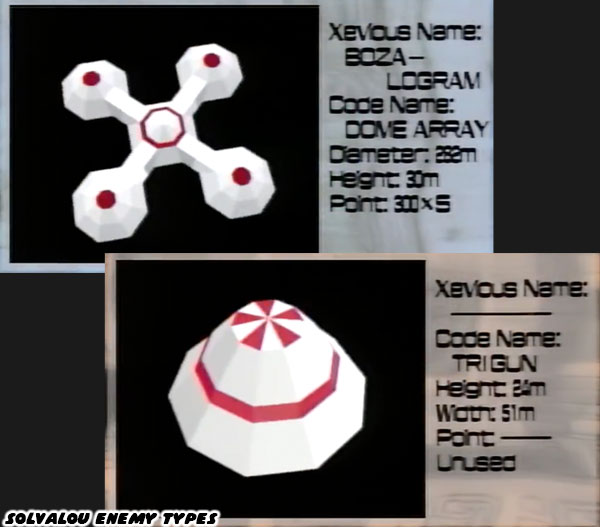
The largest forces in Namco continuity were reflected on many of the sponsor logos. I don't necessarily mean specific heroes and villains but rather corporate interests. These were the massive companies like G.V.I. which was featured in the previous blog. These were the companies that used race cars to make their brands seem desirable. Even the companies that were terrible villains in Namco continuity knew the power of good PR. Take Geldra for example.
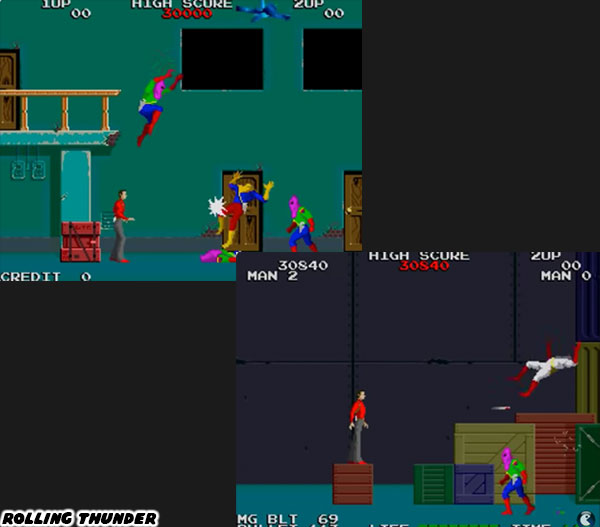
The logo for the terrorist organization was featured prominently on several Ridge Racer teams over the years. The group had first appeared in the 1986 arcade hit Rolling Thunder. It was not a racing game but instead a side scrolling action-shooter. In the game special agent "Albatross" from the World Crime Police Organization was tasked with bringing down Geldra and rescuing fellow agent Leila Blitz from the clutches of their mutated leader Maboo. Geldra turned up again and again in the Rolling Thunder sequels. Each time the scale of their operations had become much grander. Expanding to every corner of the globe and even to the nearest satellites circling the Earth. Even though the game series ended in 1993 it would forever remain a part of Namco canon. I would imagine that in the unmarked warehouses and corporate towers surrounding some of the Ridge Racer courses Geldra was busy rebuilding and plotting to take over the world once more. Of course Albatross and his fellow agents would be infiltrating those locations as well.
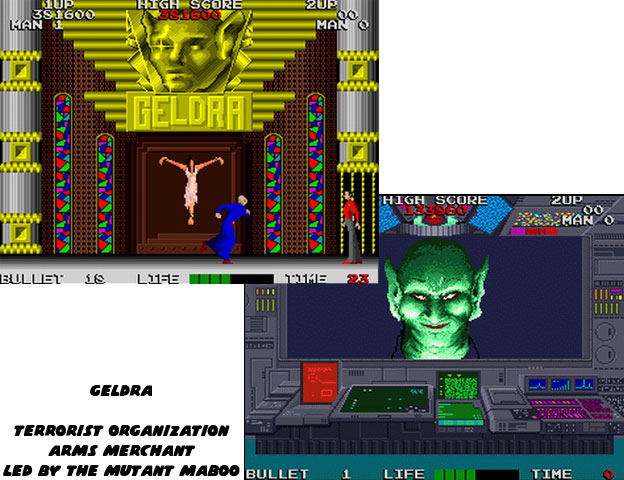
In the real world there were corporations that used racing sponsorships to sell products or ideology that weren't necessarily healthy or beneficial for humankind. Alcohol and tobacco companies made themselves appealing by aligning themselves with popular sports and celebrities. Some people might find it questionable that recreational drugs could advertise in these venues, and specifically sticker their logos all over race cars. Yet Geldra was in a different league. They were like a multinational defense contractor putting their brand on the cars. It Lockheed Martin, Northrop Grumman, General Dynamics or Boeing advertised on a race car most people in the West might not notice or even mind. However to those living in a nation, say in the Middle East, that was negatively impacted by those defense contractors then sponsoring a race car could be seen as subversive.
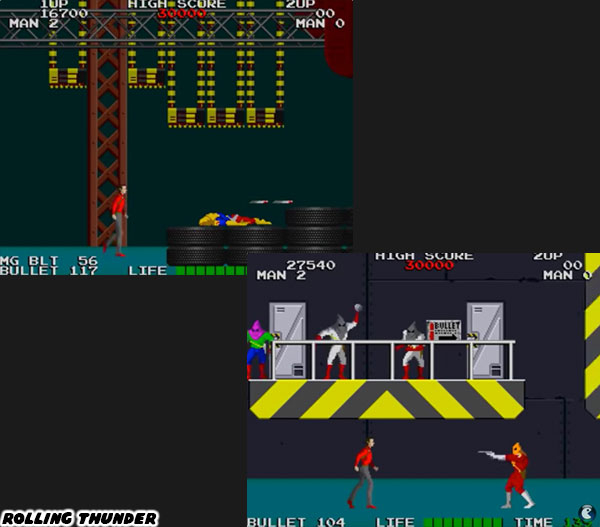
In a similar fashion tech company Arkbird created the aeronautics technology, the fancy wing, spoiler and body kits featured on many Ridge Racer cars. Arkbird was also the company that created the low-orbit military platform featured in the Ace Combat series. Arkbird and Geldra were parallels to companies like Lockheed Martin or Boeing. They were not the only defense contractors parallels featured in Namco canon.
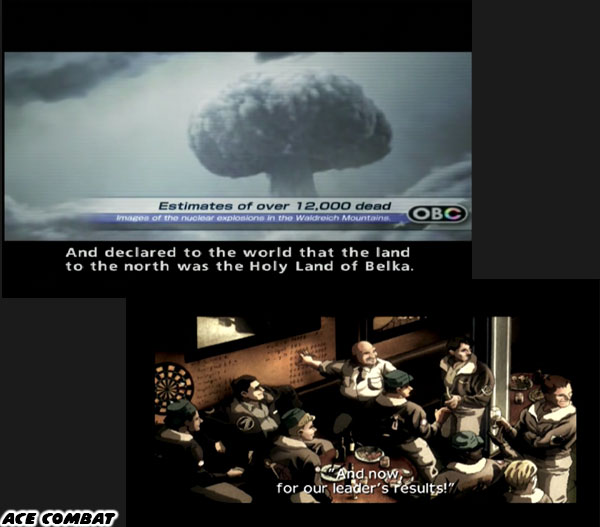
The most violent corporation with the greatest PR in the Namco world would be the Mishima Zaibatsu. That corporation sponsored the King of the Iron Fist, better known as the Tekken fighting series. The tournament brought out millions of fans and billions of virtual dollars in Namco continuity. It also brought out the greatest fighters, spies and assassins in that universe as well. In the game series fans did not necessarily fight in a competition setting, although some of the matches did take place in arenas. The majority of the conflicts were on the streets or in disputed military zones.
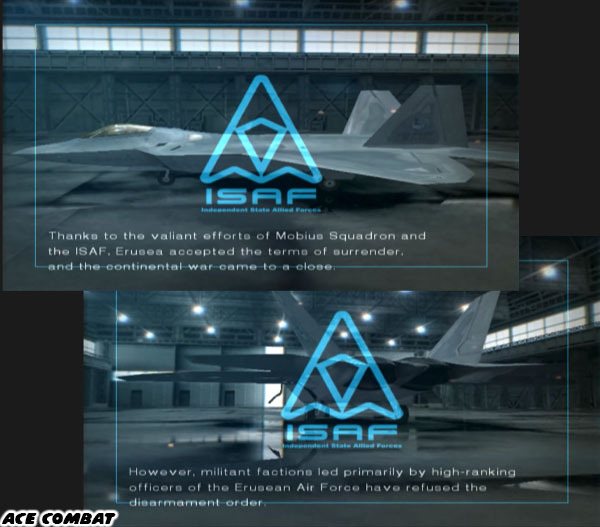
Mishima Zaibatsu was one of the largest, if not the largest, science, technology and military contractor in Namco continuity. Yet as powerful and influential as the corporation was they were in a constant battle from within. Three generations of the Mishima clan starting with Heihachi and going down to his son Kazuya and grandson Jin were constantly vying for control of the corporation. It would be four generations of conflict if the series producers would determine the life or death status of Heihachi's father Jinpachi. These men did not battle it out in the boardroom with lawyers, arbiters or hostile takeover attempts but instead with their actual fists.
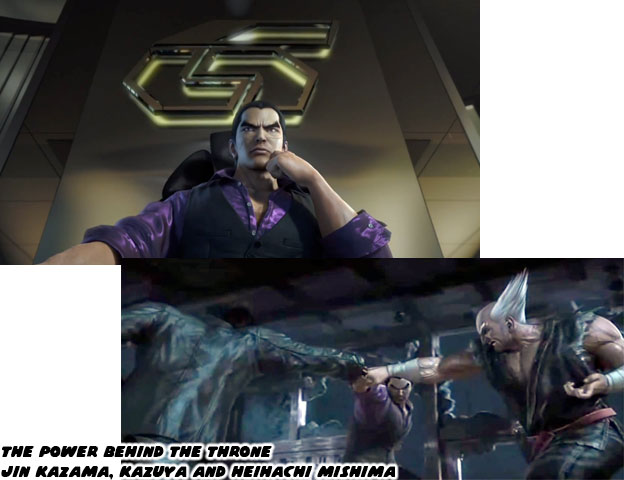
The citizens in Tekken continuity had no idea that the wars and terrorist attacks in various regions of the planet were often the results of a single families strife. In various comics and games it was revealed that the Mishima clan surrounded themselves with political figures and corporate allies to try and distance themselves from the conflict. By advertising in popular events, including the Ridge Racer series, the Mishima Zaibatsu group made themselves appear like a defense contractor and not a military powerhouse.Yet for each bridge they built there was always a new rival added to oppose them. The biggest obstacle to the Mishima Zaibatsu was the G Corporation, which was run by Kazuya Mishima. The leader in biological technology had amassed a private army that would rival the Zaibatsu. The G Coporation researchers had been on the cutting edge of biotechnology and were able to create clones, halt and even reverse the aging process and tap into the mythological "devil" gene.
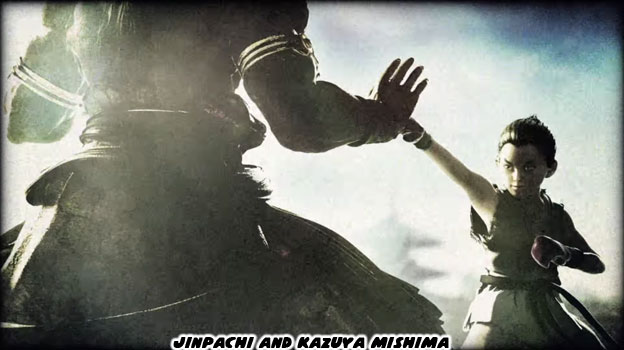
The weapons and technology featured in the Tekken, Ridge Racer and Ace Combat titles were always ahead of the curve. They had a certain science fiction element to many of their designs. Wars in the future were decided by the private armies that had access to the greatest technologies, granted they were not far removed from the private contractors of the current era. Except in Tekken continuity the soldiers were sometimes outfitted with strength-enhancing armor and giant robots instead of tanks. Some of the assault troops were completely made up of cyborgs instead of people as well. The leaders of the paramilitary branches of the G Coporation and Mishima Zaibatsu were also some of the most powerful fighters in the Tekken series. Names like Bruce Irvin, Bryan Fury, Raven and Sergei Dragunov carried a lot of weight among fans of the series. These men were mercenaries and leaders of military units from various nations. Some sided with the Mishima clan and some were trying to bring them down.
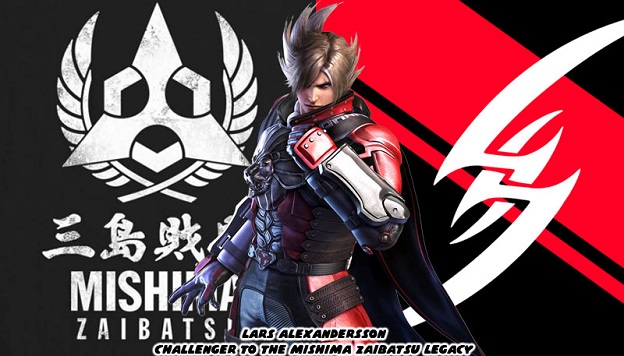
Even from within the armies there was strife. The step-son of Heihachi, Lars Alexandersson was a self-made leader of the Tekken Force. An expert fighter and brilliant strategist he fought alongside his men rather than made calls from the corporate offices like his half-brother Kazuya or father Heihachi. As such he earned their trust and admiration. He completed a successful coup d'état to assume control of the Zaibatsu military wing. His purpose was not to start a whole new war against the G Corporation but to bring an end to the conflict. He had travelled the world and had seen first hand how much destruction both groups had brought in their wake. The peace would not be long lived. As fans of the Namco titles could tell you it would only be a matter of time before the next firefight would begin.
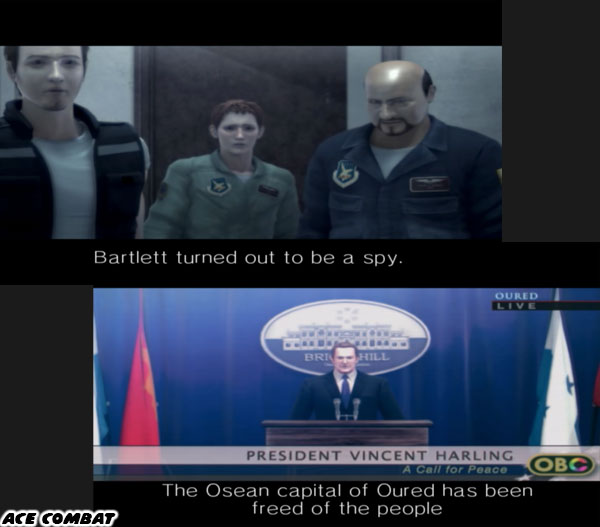
It would give producers a reason for a new Tekken game. Yet for those few months where the guns fell silent the attention of the masses would be drawn to the next Ridge Racer Project. The Mishima clan, Geldra, General Resource LTD., Neucom Incorporated and various other organizations that charted the future of the Namco universe would continue to make their presence felt by sponsoring the teams that turned Ridge City into the ultimate destination for racers and race fans. Yet something went wrong for Namco after they introduced a huge corporate villain into the Ridge Racer continuity. G.V.I. was not the reason R: Racing Evolution failed to become a hit with race fans. The next blog will look at where Namco made some missteps and what they learned from the game.
As always if you would like to sponsor me
please visit my Patreon page and consider donating each month, even as little as $1 would help make better blogs and even podcasts!























